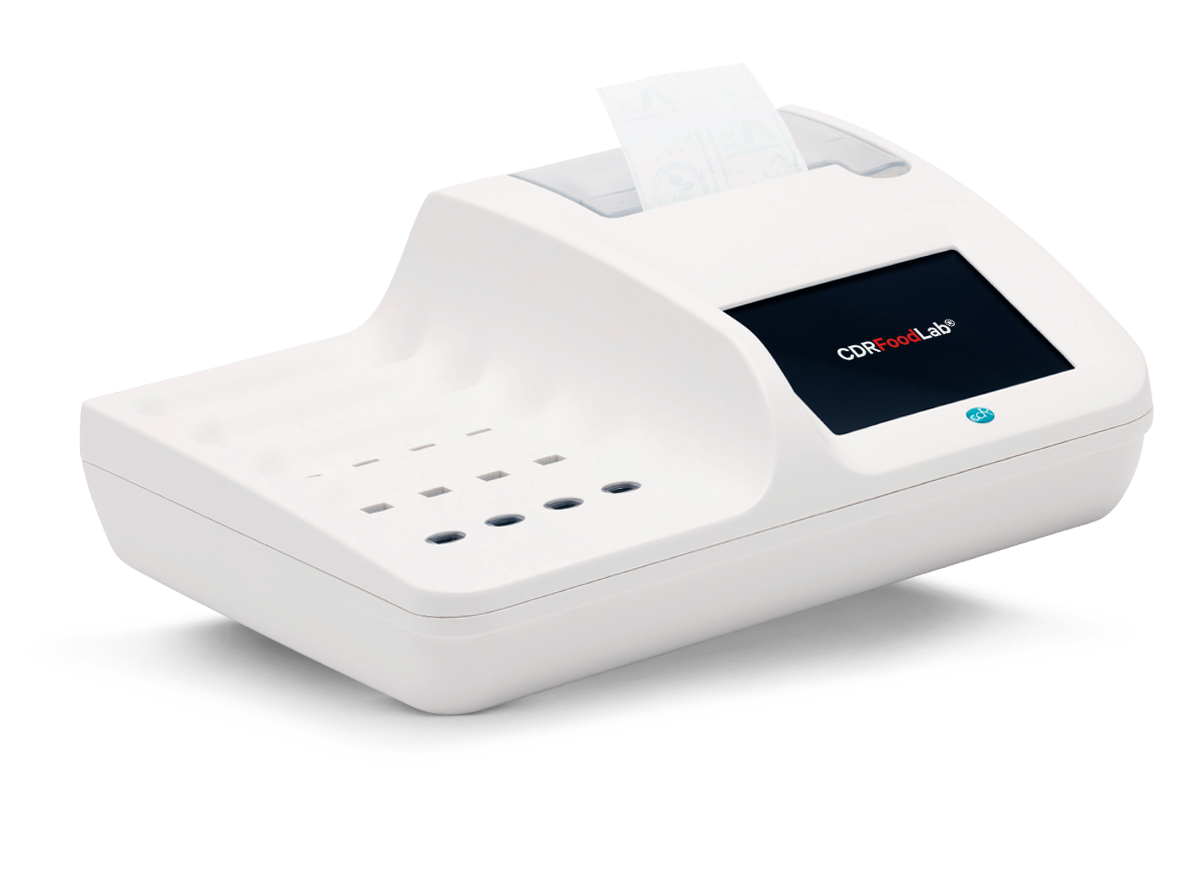Analysis of ε-fructosyl-lysine (Furosine) in milk and dairy products
The effects of milk thermal treatments or the addition of powder milk or UHT to crude or pasteurized milk can be determined by using indicators like furosine and lactulose.
The determination of furosine enables to assess the intensity of the initial phase of Maillard’s reaction (that causes heated milk to develop a brownish color), which is in turn linked to milk thermal processes.
ε-fructosyl-lysine is the first stable product of Maillard’s reaction and can be converted into furosine by subjecting milk to an acid hydrolysis. Furosine is then analyzed with the HPLC method, which is rather long, complex and expensive. Thus, ε-fructosyl-lysine, which is the first stable product of Maillard’s reaction and a precursor of furosine, can provide the same information resulting from the furosine test.
Method
Test principle
The test principle is based on a Redox reaction during which the tetrazol salt reacts with ε-fructosyllysine forming a purple compound whose intensity, measured at 545 nm is directly proportional to the concentration of ε-fructosyl-lysine.
...
Calibration curve
Parmalat® and CDR performed a joint study on ε-fructosyl-lysine in order to evaluate the possibility of using this indicator to determine whether a specific milk sample has undergone thermal treatment.
Furosine and ε-fructosyl-lysine tests were carried out in parallel on several types of milk samples.
The correlation between the two tests (R2=0.95) is good. These results indicate that ε-fructosyl-lysine and furosine values can be aligned.
The ε-fructosyl-lysine test showed a good linearity (R2= 0.99).
An internal CDR study on several types of milks enabled to determine the different classes of thermal treatments by using the ε-fructosyl-lysine values. The ε-fructosyl-lysine test, like the furosine test, enables to distinguish the main types of thermal treatments and between crude, pasteurized and UHT milk.
The discriminating limit values for the single classes shown in the table below are indicative. Users of the test should always define internal references to be able to assess the quality of the thermal treatment with a greater accuracy.
| Type of milk | ε-fructosyl-lysine (delta x 1000) |
| Raw | < 30 |
| Pasteurized | 30 - 80 |
| UHT | > 80 |
The linearity of the e-fructosyl-lysine test was also checked by adding incremental quantities of powder milk to whole pasteurized milk. As for furosine, the trend was linear (R2 furosine=0.997, R2 ε-fructosyl-lysine=0.993) and sensitivity was good because the test was able to identify a 10% addition of powder milk in the pasteurized milk.
...
Reagent test Kits
Milk
Cheese
Measuring range
| Analyses | Measuring range | Resolution | Repeatability |
|---|
Analyzers for quality control of milk and dairy products
CDR FoodLab®
- Complete analysis panel, supplied already configured
- Up to 16 determinations simultaneously
- Possibility of carrying out analyses of the same sample
- Integrated printer
- Full connections (LAN - USB - Bluetooth barcode/QR code reader)
CDR FoodLab® Jr
- Partial analysis panel, supplied configured with 3 analyses of your choice, implementable
- Up to 3 determinations simultaneously
- Wireless connection to external printer
- USB connections
